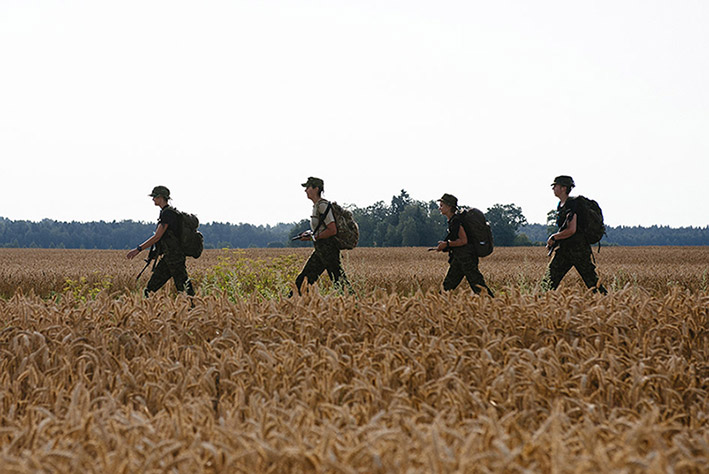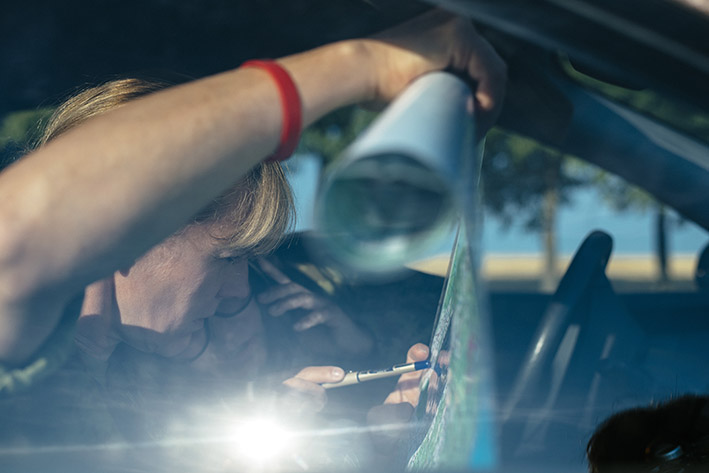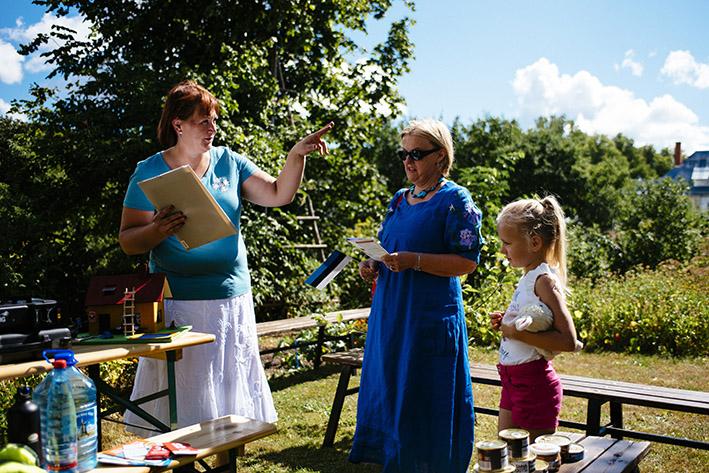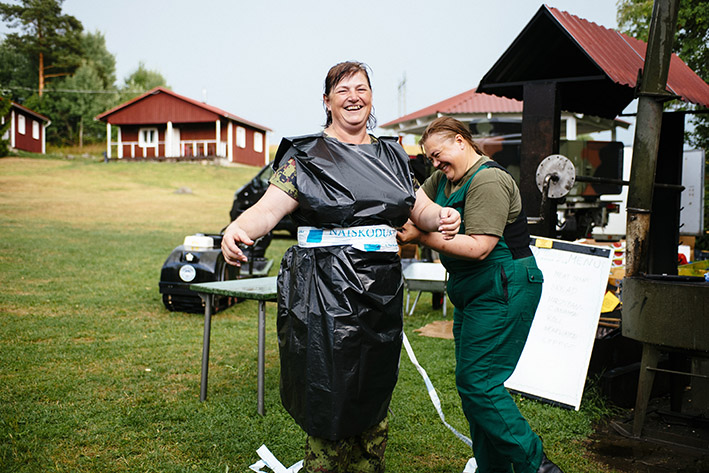Go-Far 2018: Eye on Estonia

Women soldier on to prepare for crisis
Women are joining the paramilitary amid concerns about terror attacks in Europe and possible threats from Russia
Story and photos by Alvin Ho
SHOULDERING their field packs and rifles, four women fight back exhaustion as they trudge across a wheatfield. Over the past four days, they managed only three hours of sleep as they covered 130 kilometres on foot while striving to avoid detection by enemy forces.

Students in the eighth grade start their lessons by playing on their block flutes.
The female military volunteers get moral support from family and friends,
who show up on the sidelines during the challenge to cheer them on.
Among 30 teams from 15 countries, they are the only all-female team taking part in the Admiral Pitka Recon Challenge, a military competition held from Jul 30 to Aug 3 in the eastern county of Jõgeva. They are also one of the teams that managed to finish the competition, placing 17th. Nine teams retired early.
Their success is hardly a surprise when one considers that the four are trained military volunteers from the Naiskodukaitse, or the Women’s Voluntary Defence Organisation.
The largest women’s organisation in Estonia, the Naiskodukaitse consists of 2,500 members from all 15 counties of Estonia. It is a subunit of the paramilitary Estonian Defence League (EDL), which includes both men and women.
Like most members of the EDL, the Naiskodukaitse volunteers are civilians who hold full-time jobs on weekdays and answer to the Estonian Ministry of Defence during weekend training and when they are activated for duty by their district commanders.
Women are stepping up

Ms Anna Kütt, from the EDL, and women’s league vice-chairwoman Helen Allas (inside), navigating through the recon challenge.
More women are joining the EDL and Naiskodukaitse as global events like the 2014 Russian annexation of Crimea and the London terror attacks this year remind Estonians of their tiny nation’s vulnerability.
Ms Elisa Jakson, 33, who works in the public relations department of Naiskodukaitse, recalls that volunteer numbers increased after the 2007 Tallinn riots, when the relocation of a World War II monument sparked violent protests by ethnic Russians.
While the police defused the riots, EDL volunteers came out in force to help direct traffic and pedestrian flow away from the chaos, said Ms Jakson.
“They weren’t wearing uniforms as they didn’t want to be recognised as military,” she said. “But they did their job.”
The 26,000-strong EDL was established in 1918 to support the Estonian Defence Forces (EDF) in times of national emergency. The military is about a quarter of the EDL’s size, composed mostly of male conscripts. Although all healthy Estonian males are required to complete up to 11 months of military service, only one-third of Estonian men actually enter the service.
With volunteers spread out across the country and a clear command structure like that of the official military, the EDL and Naiskodukaitse paramilitary forces are easy to mobilise and deploy for a wide range of duties.
Paramilitary personnel may be activated during civil emergencies like forest fires and floods, as well as for search-and-rescue missions, which often include working alongside the police and emergency response teams.
In the Naiskodukaitse, the women are trained in basic soldiering, map and compass navigation, weapon handling, first aid and combat support activities like field cooking. The organisation also has eight departments that perform roles such as combat support, cultural activities and public education.
Reasons for volunteering

League member Piret Valge (in blue top) explains to a mother and daughter
how to pack an emergency ration box for five days.
Ms Jakson chose to join the Naiskodukaitse out of patriotism and a love for the outdoors, undergoing outdoor military training before taking up her public relations role.
“I heard cool stories about adventures and hikes and I wanted to do it as well,” she said.
A nationalistic spirit runs deep in her family. When she was a child, her parents took her to participate in the Baltic Way — a demonstration involving two million people joining hands from Estonia to Lithuania to protest for independence from the Soviets.
She also recounted a memory from the period when Estonia was occupied by the Soviet Union; as a kindergartener she was sent out of class for refusing to dance and wave a red scarf to a Russian song.

Field cooks Heili Mets, 45, (left) and Eda Kivisild, 49,
take a break from cooking for more than 300 soldiers to make a dress out of trash bags.
Whatever their reasons for joining, many members of the paramilitary and military forces find themselves forming a tight-knit community with their fellow volunteers.
Ms Kadi Kuusmann, 30, leader of the EDL’s Tartu district cultural group, said that being part of the women’s league helped her settle in when she moved from Tallinn to Tartu, Estonia’s second largest city.
“I felt lonely when I first came here,” she said. “But this is a place where I could find a family, and new friends.”